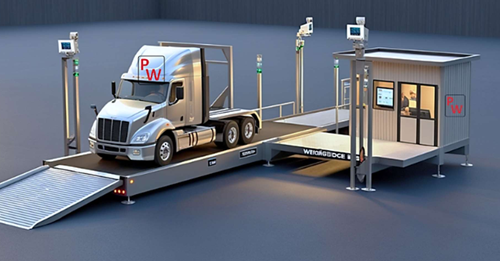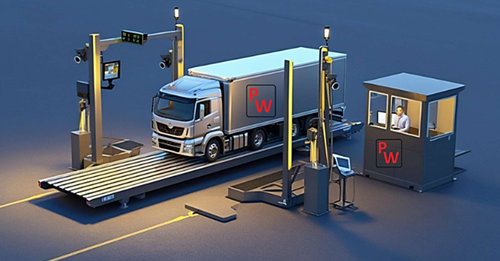Weighbridge Automation Systems
We are Manufacturer, Supplier, Exporter of Weighbridge Automation Systems. Our setup is situated in Pune, Maharashtra, India.


- Definition :
- Weighbridge automation refers to the integration of advanced technologies and systems to streamline the weighing process at weighbridges. This includes automated data capture, vehicle identification, and weight measurement, enhancing operational efficiency and accuracy while reducing manual intervention.
- Advantages :
- A. Increased Efficiency : Automation speeds up the weighing process, allowing for quicker vehicle turnaround times.
- B. Improved Accuracy : Digital systems minimize human error, providing precise weight measurements.
- C. Enhanced Data Management : Automated data capture facilitates better tracking, reporting, and integration with other systems.
- D. Cost Savings : Reducing manual labor and improving throughput can lead to significant long-term savings.
- Features : I. Technology Integration
- A. Foundation : Can utilize a column type civil foundation or a pit type civil foundation or it can use a self-supporting MS frame to hold the load cells and platform.
- B. Load Cells : Mounted on supports to measure weight and transfer data to the indicator.
- C. Platform : A flat surface supported by load cells for vehicle weighing.
- D. Ramps : Constructed on both sides for smooth vehicle access, available in concrete or steel based on budget and needs.
- E. Capacity : Accommodates from 10 to 150 tons, making it suitable for a range of vehicles and trailers.
- F. Platform Sizes : Constructed on both sides for smooth vehicle access, available in concrete or steel based on budget and needs.
- 1. 4-6 Tire Vehicles : 6-10 meters (20-33 feet) long and 3 meters (10 feet) wide.
- 2. 12-16 Tire Vehicles : 10-15 meters (33-50 feet) long and 3 meters (10 feet) wide.
- 3. Trailers: Up to 18 meters (60 feet) long and 3 meters (10 feet) or more wide, depending on trailer size.
- Remote Monitoring : Allows oversight of operations from a distance, improving management efficiency.
a) Electronic Weighbridge :
b) Access Control Systems :
RFID tags, barcodes, or QR codes for automatic vehicle identification, reducing delays
c) Boom Barriers :
Automated boom barriers control vehicle access to the weighbridge, ensuring that only authorized vehicles are allowed entry. This enhances security and helps manage traffic flow efficiently.
d) Vehicle Positioning Systems :
Technologies such as laser-guided or ultrasonic sensors help ensure vehicles are correctly positioned on the weighbridge. This enhances measurement accuracy and minimizes the risk of damage or errors during the weighing process.
e)Audio Announcement Systems :
Automated audio systems provide real-time announcements to drivers, informing them about weighing status, instructions, or any delays. This improves communication and enhances the overall user experience.
f) Cameras and Image Recognition :
Capture vehicle details for verification and record-keeping.
g) Data Management Software :
Centralized systems for real-time monitoring, reporting, and integration with business processes.
II. User Interfaces
III. Scalability
As business needs grow, additional features and integrations can be added without major overhauls.
